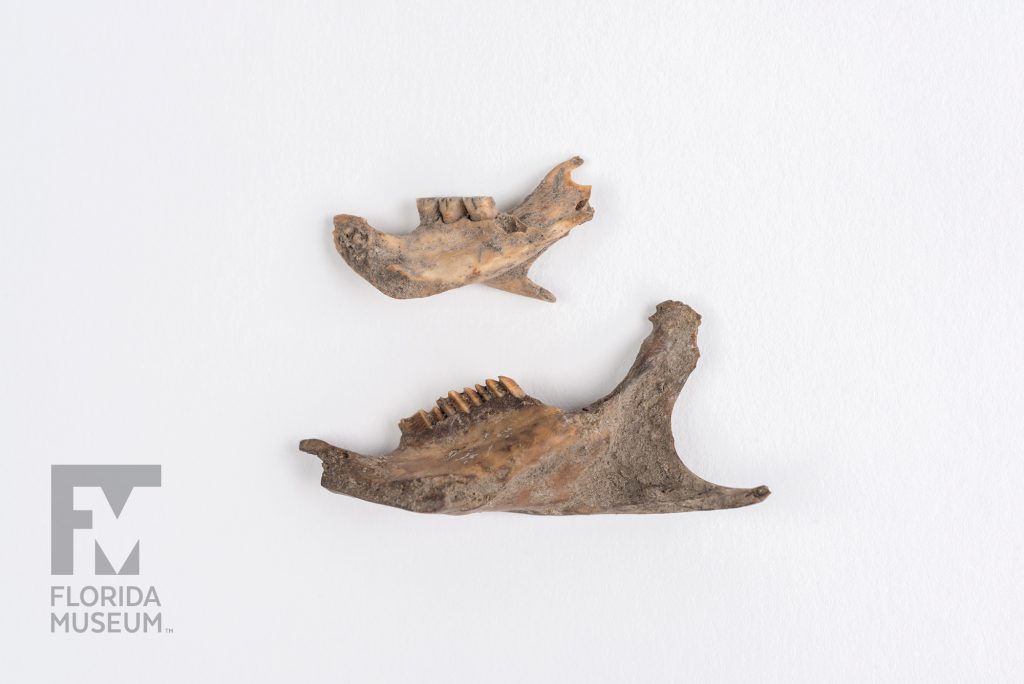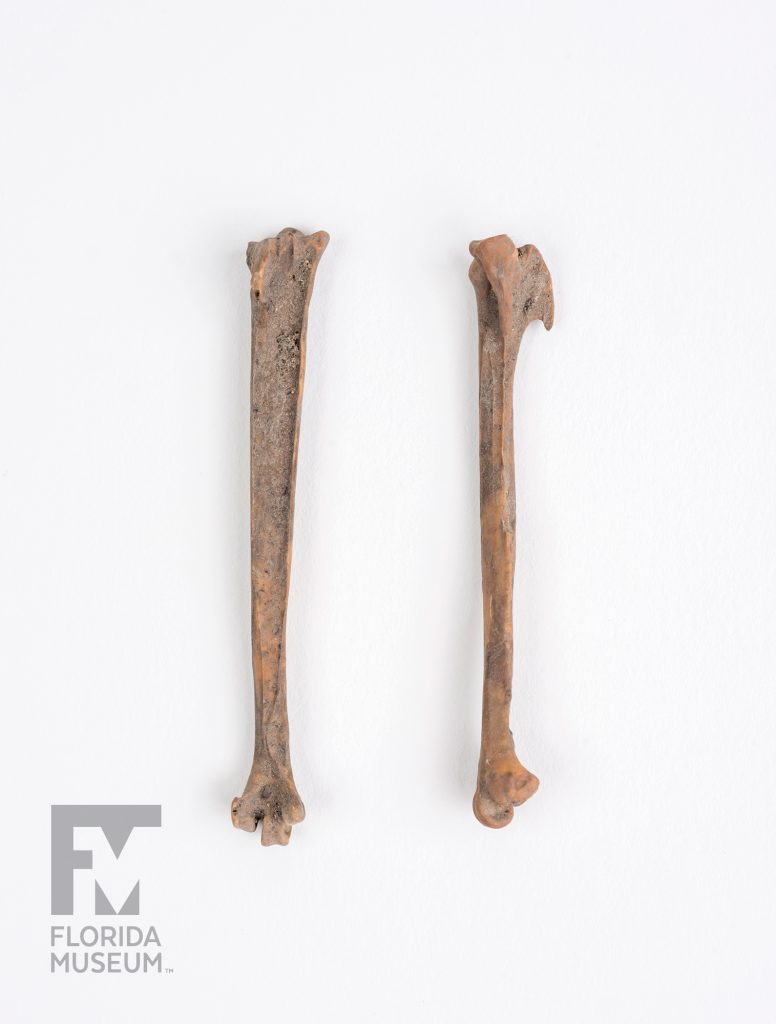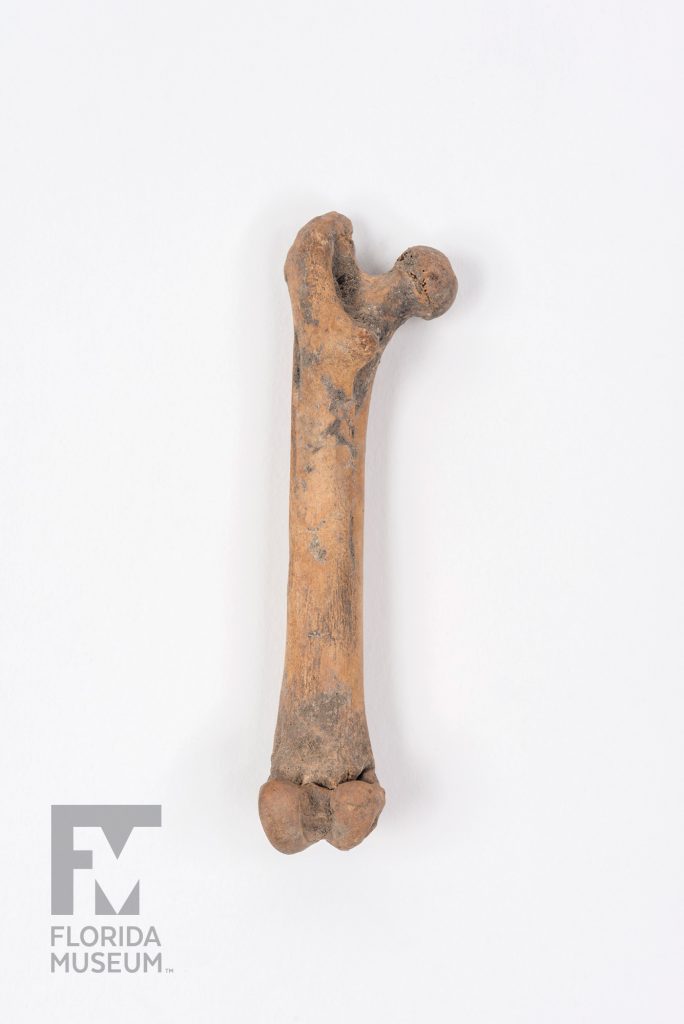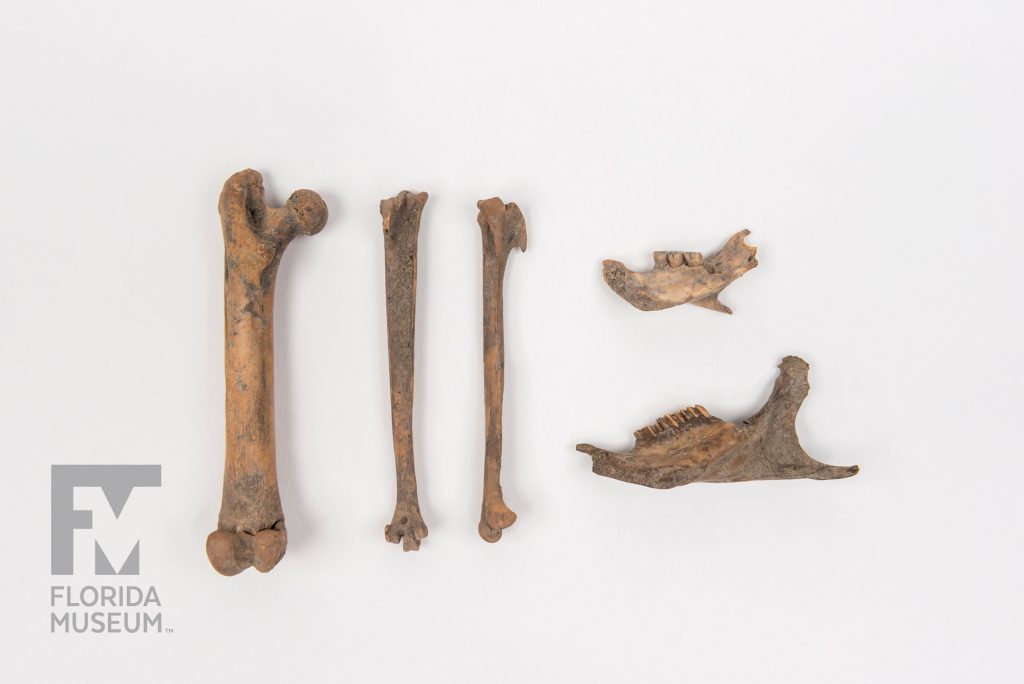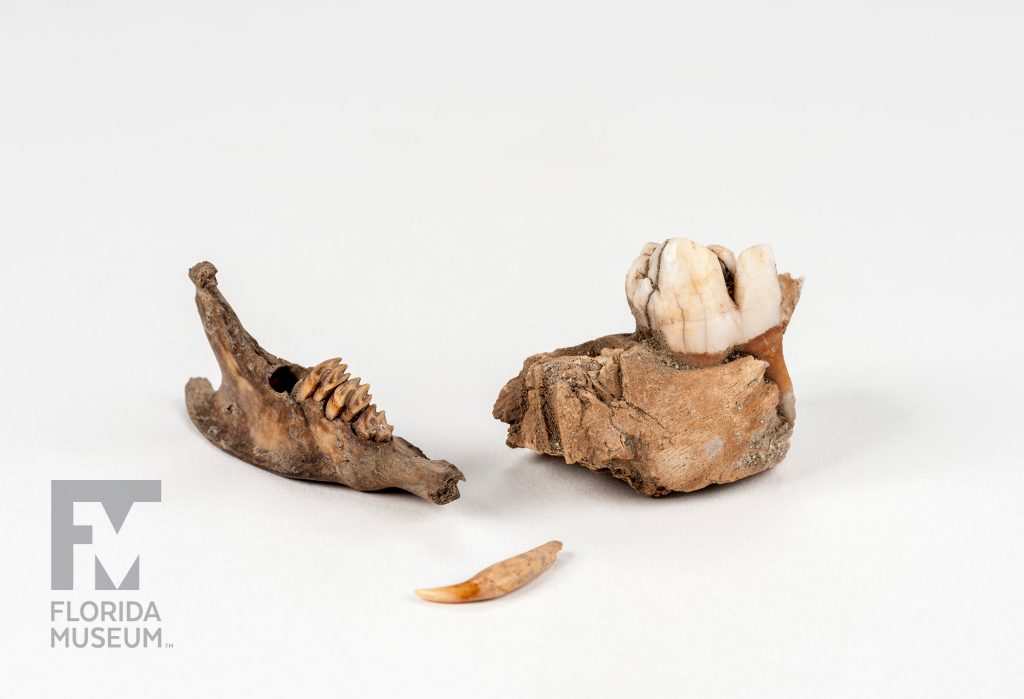Columbus’ first voyage in 1492 introduced European pigs, cats, rats and mice to the Caribbean. Animal remains from Columbus’ first settlement document the introduction of these invasive species, which had serious consequences on native plants and animals.
Summary
Archaeological Animals
From En Bas Saline, Haiti
Lived ~late 15th century
Native Species
Puerto Rican Hutia (Isolobodon portoricensis-extinct), Hispaniolan Edible Rat (Brotomys voratus-extinct) and American Purple Gallinule (Porphyrio martinica-extant)
European Species
Eurasian Wild Pig (Sus scrofa), Domestic Cat (Felis catus) and House Mouse (Mus musculus)
Collection
Story
Animal remains found in archaeological contexts are known as zooarchaeological specimens. Zooarchaeological specimens, such as bones and teeth, are significant for their dual ability to inform us about past natural and cultural history.
The zooarchaeological specimens featured here are from the En Bas Saline archaeological site located in northwestern Hispaniola, in modern-day Haiti. Excavated by Kathleen Deagan, the En Bas Saline site is believed to represent one of the original indigenous Caribbean communities encountered by Christopher Columbus in the late 15th century. Specimens recovered from the site are remarkable because they provide a snapshot of greater Caribbean animal biodiversity at the dawn of European colonization, providing a “baseline” of sorts from which to assess the impacts on biodiversity, as well as cultural diversity that followed European arrival.
The zooarchaeological specimens recovered from En Bas Saline include terrestrial fauna native to Hispaniola at the time of European contact, including Hutias, the Hispaniola Edible Rat, and the American Purple Gallinule – as well as animals introduced from Europe such as the house rat, domestic cat and pigs. Each category of fauna is significant for revealing how the onset of European colonization shaped and eventually impacted Caribbean terrestrial animal biodiversity, including native animal extinctions and population declines over time.
The Hispaniola Edible Rat, once native to Hispaniola and present at En Bas Saline, went extinct shortly after European arrival and its extinction is in large part attributed to the introduction of European rats and domestic cats – both of which were present at En Bas Saline.
Likewise, Hutias, a medium-sized rodent, were present before and after the arrival of Europeans. Once endemic to northwestern Hispaniola, the now-extinct Puerto Rican Hutia was not only heavily exploited by indigenous people at En Bas Saline for food, it was also transported and introduced to other Caribbean islands – including Puerto Rico and St. John in the U.S. Virgin Islands. That said, sometime after the onset of European colonization, Puerto Rican Hutias across the Greater Antilles went extinct. Hutias may have been prey to domestic cats and experienced habitat disturbances from pig rooting.
In addition to animal biodiversity loss, zooarchaeological records at En Bas Saline also help us to document animal species that survived and continued to persist throughout great environmental and cultural changes. Such is the case with the American Purple Gallinule specimens recovered from the site. This bird was likely sought after by indigenous people for its brightly colored feathers, and continues to delight bird-watchers today.
Michelle LeFebvre
Courtesy Research Scientist, Environmental Archaeology*
Florida Museum of Natural History
Exhibit
On display Sept. 23, 2017-Jan. 7, 2018, Rare, Beautiful & Fascinating: 100 Years @FloridaMuseum celebrated the Museum’s rich history. Each Museum collection was asked to contribute its most interesting items and share the stories that make them special. Though the physical exhibit is closed, this companion website remains online, providing an opportunity to experience the Florida Museum’s most treasured specimens.
Exhibit Area: Objects Tell Stories
Theme: Spanish Colonial Archaeology
 Want to see more? Explore more than 300 breathtaking color photos of plants, animals, fossils and cultural heritage materials from the Florida Museum of Natural History’s collections in the award-winning book All Things Beautiful available from the University Press of Florida.
Want to see more? Explore more than 300 breathtaking color photos of plants, animals, fossils and cultural heritage materials from the Florida Museum of Natural History’s collections in the award-winning book All Things Beautiful available from the University Press of Florida.
*This title was accurate at the time the exhibit was on display in 2017. Please visit the collection website to verify current staff and student information.
